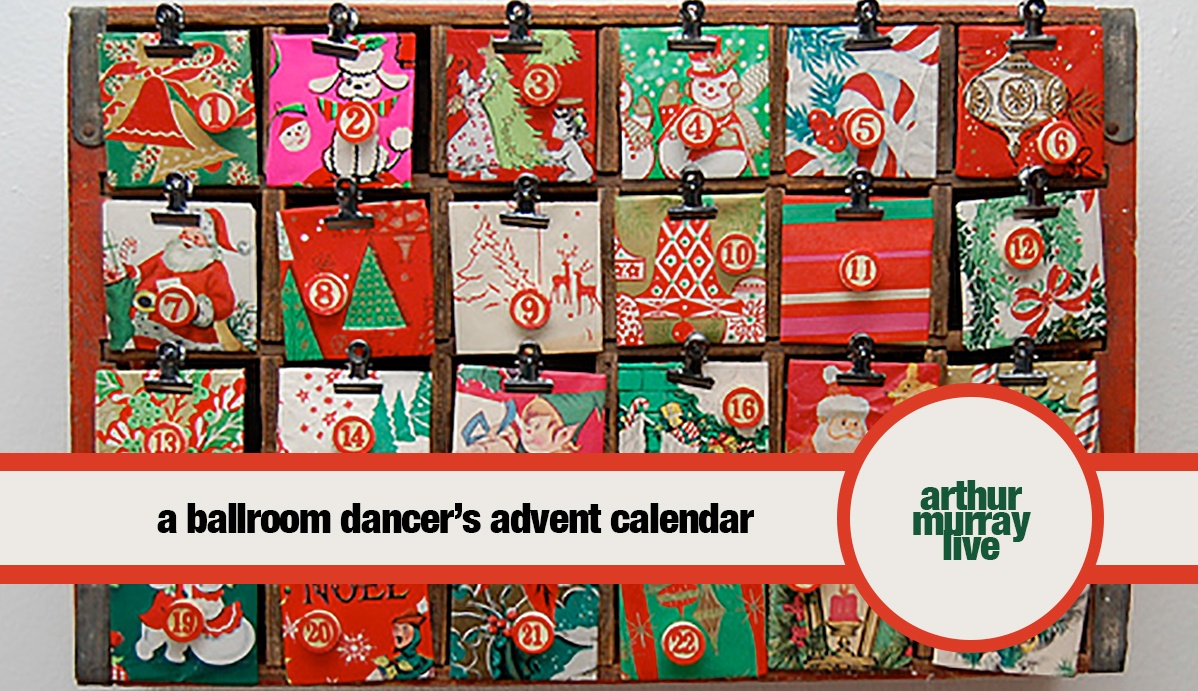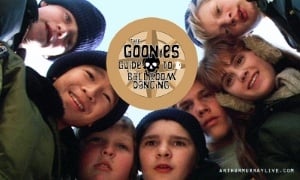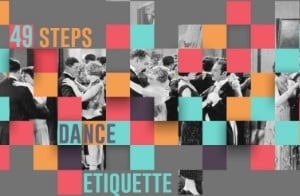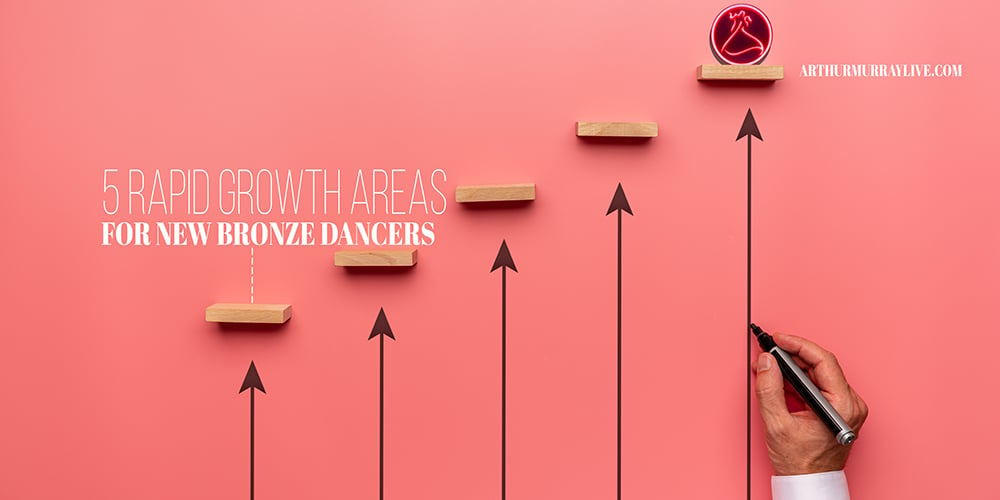
Your Ballroom Dancing Advent Calendar
Imagine if you studio had a special ballroom dancing advent calendar.
On the cover would be the Arthur Murray logo, along with the requisite pictures of dance images each adorned in Holiday themed garb.
Then there would be 25 little working doors, normally counting down the days until Christmas. Each day that passes, you open a door, and grab a little piece of chocolate.
With this ballroom version, the door you're opening will be something you do on your dance lessons, and the reward will be something that will build towards a big dance breakthrough.
Ready to get started? Don't forget to keep score as you go along.
1. Walk in
Maybe you've done this already, but this is a pretty important step in the process.
Payoff: There are too many to list in a sentence, but how about this: After this door opens, you will no longer believe any of the Dance Myths that stopped you leading up to this all-too-important first step.
2. Start Your Introductory Program
In the previous step, you were taking a leap of faith, combined with a sudden burst of courage, to make your first move into the studio. Your introductory dance program gives you the time to get introduced to a few dances, the style of instruction, and allows you, the student, to develop the beginnings of a foundation in dancing based on experience.
Payoff: You will make exponential improvement within the 2-4 weeks on this introductory program - further proof that you are capable of learning.
3. Try Your First Newcomer Group Class
The newcomer group class is the dance studio equivalent of Home room in high school. It helps you learn in a group setting which allows your confidence to blossom.
Payoff: It's easy to feel like the least experienced dancer in your studio. That is, until you attend the Newcomer class. There, you'll meet other new students, learn together, and quickly find that you're not the only new dancer you know.
4. Try Your First Practice Party
Maybe this is a regular part of your dance program, but if you're opening this door, congratulations, it's a big one.
Payoff: Your private and group lessons teach you the skill, but the practice party is where you work on applying that skill. This will be your regular lab session for skill implementation, and it's also a stepping stone to taking your dancing out in public.
5. Begin Your Bronze Dance Program
Bronze is the standard for building the muscle memory and repertoire necessary so your dance skill is something you keep forever.
Payoff: Bronze dancers are capable of dancing to any music, on any dance floor, anytime that they'd like. You'll never see a dance floor the same way ever again.
6. Try Back to Back Lessons
Muscle Memory is the light at the end of the learning tunnel. One great way to acquire it sooner than later is with 90 minute appointments, instead of the usual 45.
Payoff: Usually it takes 5-10 minutes just to feel fully removed from the outside world, back to back lessons ensure that the overwhelming majority of your time in the studio is moving you quicker towards your goals.
7. Demonstrate Your Progress
This doesn't have to be on a stage, or with a costume, doing the splits, or involving anything outside of what you're learning. It can be as simple as a 20 second reenactment of what you do on your lessons.
Payoff: Your confidence is like a muscle - the more you can challenge it, the more it will develop. If you've opened this door on your calendar, you've unlocked a big one.
8. Invite a Friend
Whether your guest decides to take a few dance lessons, or to just show up at an Open House you invite them to - it's a win because, either way, showing up is showing support in what you're doing.
Payoff: Your friends don't need to be dance experts to see, first hand, why you love your new hobby so much.
9. Fill in Some Areas
Let's say your first Bronze Program included a collection of 6 to 8 dances, but now through the group classes, parties, and demonstrations you've seen you realize there are some other dances you're interested in learning. Your program is something that you and your teacher can edit as you move along.
Payoff: The more dances you learn, the fewer times you'll have to sit out.
10. Chart Your Progress
Have a dance notebook? Then you get to open up this door on your calendar.
Payoff: In addition to nailing down some dance terminology, a dance notebook acts as your journal and autobiography of your dance journey.
11. Give Someone "The Tour"
At some point there will be someone entering the studio with the same look you had at step #1. This is your big opportunity to pay things forward.
Payoff: Showing someone around, or simply just introducing yourself, can go a long way to making a brand new student feel welcome, and a not-so-brand-new student feel like they've just moved up the studio food chain.
12. Recognize the Music
Over the course of your Bronze 1 level, you'll be getting a crash course in music-meets-dancing appreciation. The practice parties will be particularly valuable to this all-too-important stage.
Payoff: Recognizing the music, without prompting, is one of the essential skills for social dancing in public.
Congratulations! You're just about half way there!
13. Chart Your Halfway Point
We've all seen the flight tracker on an airplane, or have heard the ever-popular question, "are we there yet?" on a family road trip. The halfway point is the dance program version of that, and this is the time to plan the time for your next level, projects, and future dances.
Payoff: This has all the benefits of a planning meeting. You lay out the strategy, are in the loop, and it can accelerate your progress.
14. Add Some Weird Ones
By this point, there should be a growing collection of dances that you never dreamed you'd ever be interested in, but are. Add a few of these to your program to open this stage of the advent calendar.
Payoff: Dances like Argentine Tango, West Coast Swing, or Bachata seem a lot more practical and accessible once you've got some dance skills in your back pocket. Not to mention, they unlock other areas of your dance learning.
15. Plan a Routine
Chalk this up as one idea that would fall under the "crazy category" if it was presented to your non-dancing self.
Payoff: A routine is a vessel with a beginning, middle, and end that is designed to retain transitions, style, and technique. Even if you never perform it, a routine is your hack for retaining this precious information.... and it's fun.
16. Enlist a Consultant
A lesson with a dance consultant, often referred to as a "coaching lesson", is definitely a big milestone on our calendar quest. Have you tried one of these yet?
Payoff: This is a great way to make short and long term bursts of progress. The real reward here is all of the potential momentum loss you are avoiding. Let's be honest, learning to dance is a process that involves your brain and body getting along, and that can make retaining information a little challenging. An open door here makes sure more of them stay open in the future.
17. Attend a Social Dance Event
Whether it is an evening dinner and dance after a large local event, or a special night out on the town put together by your studio, this is definitely an important step.
Payoff: Your goal is simple, to pressure test your Practice Party skills in a new environment.
18. Progress Check
Your car needs regular maintenance to keep it on the road. Your studio supervisor is like a world class auto technician for your dance hobby.
Payoff: Whether it is a quick adjustment with your dance frame, or a special assignment with your teacher to explore some new technique, a Progress Check pays huge dividends on your road to muscle memory - and most will end with a follow up assignment and some notes about how you're doing.
19. Add a Teacher (or Two)
A movie needs more than just a director and an actor. There are all sorts of roles to make the movie come together. The same can be said about your progress. Your main teacher is the director, but adding in the help of an additional teacher can be a big help to getting you to where you want to go.
Payoff: Bringing in an additional teacher for things like arm styling, routine coaching, or graduation prep gives your teacher a chance to delegate and expose you to the strengths of the team they work with.
20. Go Big, Go Small
One of the biggest challenges of your first level is getting your body to distinguish between your ballroom and latin movement - the first one requires larger steps than the second. If you've done some work with your teacher on this, and can keep your heels out of your Rumba, then you've unlocked this step up the dance ladder.
Payoff: Whether you compare this to watching a movie with surround sound, or pairing the right clutch with an evening gown, that's how important footwork is to each dance. Get that under control and your dances not only feel better, but you'll expend less energy when you're dancing.
21. Try a Basic (Checkout)
A basic checkout is a way to get your first taste of the graduation process in your program. You'll demonstrate the basic in each of your dances for the Supervisor, and get feedback afterwards.
Payoff: The basic checkout eliminates the unknown from the graduation process. When that happens you can plan further in advance for dance events that matter.
22. Recognize a Setback
Why the heck is this included on the list?
Well, one of the best moments in your dance hobby is when you can recognize when something is a little off with your execution. Not only that, if you can do that level-headed, with some idea of what might have gone wrong, this means that you've unlocked this elusive, yet important, door.
Payoff: If you've read Dance Progress Explained: The Arthur Murray Curve of Learning, this stage is a textbook example of the Conscious Use Stage... and that's a good thing.
23. Get Yourself a Dance Bag (with all the fixins)
By now, you've got dance progress, a studio, teacher, notebook, and the healthiest addiction you could ask for. Now it's time to pick up a nice tote bag (Here are a few options) that is exclusive for your hobby. Inside, feel free to store your notebook, dance shoes, but please leave your teacher at the studio.
Payoff: A seamless transition to a dance lesson on short notice.
24. Make New Year's Dance Plans
This doesn't necessarily mean you'll be doing a solo in Times Square, or holding down the lighted disco floor like Mr. Travolta in Saturday Night Fever, but if you've reached this stage of the calendar, make some social dance plans for New Year's Eve - even if that means it's a simple dance party in your kitchen.
Payoff: Pat yourself on the back. Your hobby is now positively impacting your social calendar.
25. Share a Dance
Your most important audience are your family and friends. Those people you're likely to see on, maybe, Christmas? Rather than waiting for their inevitable request to see you dance, why not surprise your Aunt Margaret, your Uncle Jim, or your Mom, Dad, Sister, or Brother with an impromptu Foxtrot to some holiday music.
Payoff: More than anything, this is a moment that will have ripple effects forever. Not only will it be cherished by your family, it's the sort of moment that makes your dance teacher's dreams for you come true.
Final Thought
How did you do?
Were you able to unlock all 25 of these little dance doors? Share your score, your thoughts, or favorite dance stories in the comments below, or join in the conversation on Facebook or Twitter.
While your dance teachers plan dance programs all year round there are still many students that never reach some early milestones like these. Hopefully, in some small Christmas miracle sort of way, this article has positively impacted your journey, and your chances of seeing what your hobby can become both on and off the dance floor.
Happy dancing, and happy holidays!
Take the next step in your Dance Hobby and become an Arthur Murray Live subscriber today!
Banner Image Credit: Coca-Cola Advent Calendar




























